Seeing the moon’s brightness in the sky is like entering another story of the universe for moon riddles. For many centuries, the sea has inspired poets, helped sailors go on their journeys, and challenged scientists. From the days when Selene glowed in mythology to the moment of NASA’s Apollo missions, the moon mixes science, enchantment, and stories into one gleaming ball. Unmasking its secrets can be achieved in a fun way with riddles.
125+ moon riddles with answers are made to awaken curiosity in both children and adults. No matter if you need moon riddles to spark kids’ curiosity, difficult questions about the moon for adults, or a bit of fun to share in classrooms, you will find great options here. For more celestial brain teasers, explore stars riddles to complement your lunar journey.
These games use play to educate about the moon’s phases, teaching about lunar phases, why tides occur, and local traditions as they help develop good thinking skills. Since they mix scientific ideas about space with clever wordplay, they appeal to teachers, puzzle fans, or people enamored by the night sky.
We should start our journey to the moon with easy riddles meant for younger ages. To master riddle-solving, check out this guide to solving riddles like a pro.
What Are Moon Riddles?
Answer to a moon riddle often involves the outer space object’s shining light, different phases, gravity, or legends. They help people become curious about astronomical topics such as how tides might depend on the moon’s gravity and inspire creativity using stories such as Chang’e going to live on the moon.
Throughout history, riddles have taught important things, and moon riddles do the same by making them fun. Learn why riddles boost mental development in kids here.
For instance, a riddle like “I light the night but am not the sun. What am I?” (Answer: The moon) introduces kids to the moon’s reflective glow. A tougher one, “I pull the seas with no hands to grip. What am I?” (Answer: The moon), teaches gravity’s power. Versatile for classrooms, team-building, or casual fun, these riddles shine bright.
Easy Moon Riddles for Kids
Young learners will be intrigued and love these fun moon riddles since they are simple and catchy.
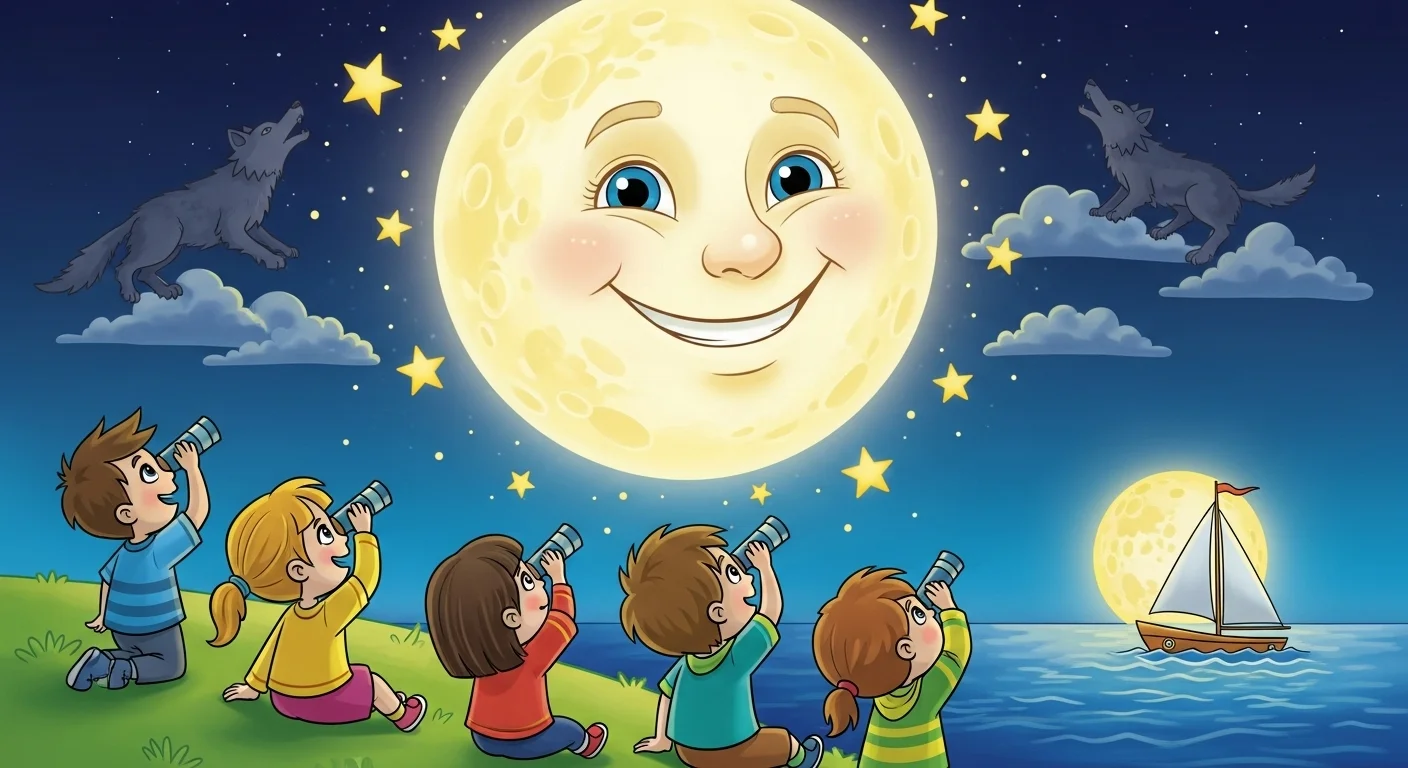
- Riddle: I glow at night but borrow my light. What am I?
Hint: I reflect the sun’s rays.
Answer: The moon
Explanation: The moon shines by reflecting sunlight.
- Riddle: I’m round and bright when stars appear. What am I?
Hint: I’m not a star or planet.
Answer: The moon
Explanation: The moon stands out in the night sky.
- Riddle: I change my shape but never leave the sky. What am I?
Hint: My phases shift monthly.
Answer: The moon
Explanation: The moon’s phases alter its appearance, but it remains constant.
- Riddle: I guide sailors home in the dark. What am I?
Hint: I’m not a lighthouse.
Answer: The moon
Explanation: The moon’s light has aided navigation for centuries.
- Riddle: Some call me cheese, but I’m made of rock. What am I?
Hint: It’s a space object.
Answer: The moon
Explanation: A nod to the myth that the moon is made of cheese.
- Riddle: Wolves howl to me when I’m full. What am I?
Hint: It’s a bright celestial body.
Answer: The moon
Explanation: Folklore links wolves howling to the full moon.
- Riddle: I’m always there, but not always seen. What am I?
Hint: I’m in the sky even during the day.
Answer: The moon
Explanation: The moon is present but not always visible due to phases.
- Riddle: I light the night for campers’ tales. What am I?
Hint: I’m a natural light source.
Answer: The moon
Explanation: The moon illuminates nighttime activities. For more outdoor-themed puzzles, try summer camp riddles.
- Riddle: I’m bigger than stars in the night sky’s view. What am I?
Hint: I’m closer to Earth than stars.
Answer: The moon
Explanation: The moon appears larger due to its proximity.
Tricky Moon Riddles for Adults
These hard moon riddles for adults dive into scientific and poetic depths, challenging puzzle lovers and space enthusiasts.
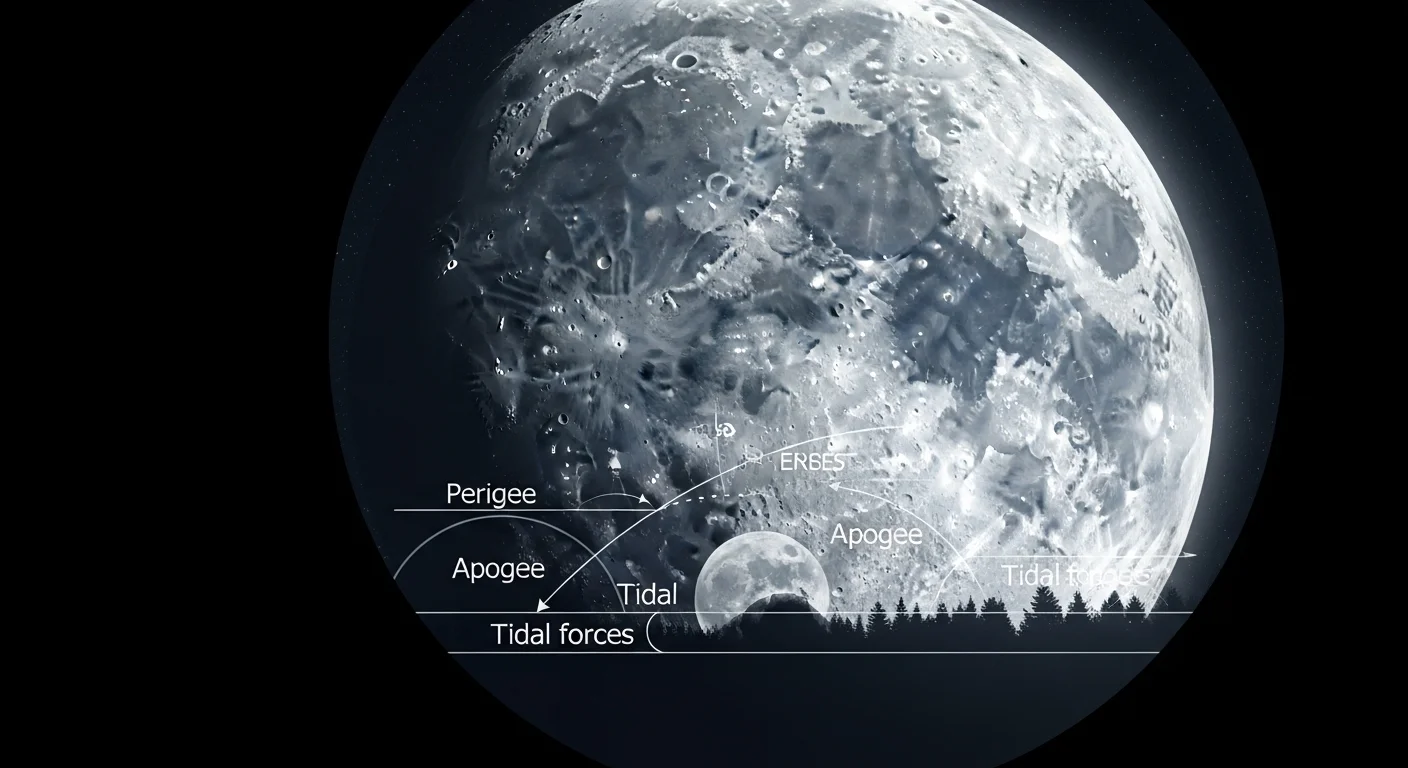
- Riddle: I pull the seas without touching them. What am I?
Hint: It’s about gravity’s force.
Answer: The moon
Explanation: The moon’s gravity causes Earth’s tides. Learn more about tidal forces from NOAA’s tide resources.
- Riddle: My far side hides from Earth’s gaze. What am I?
Hint: It’s not really dark.
Answer: The far side of the moon
Explanation: Tidal locking keeps the far side unseen from Earth.
- Riddle: I’m closer at perigee than apogee. What am I?
Hint: It’s an orbital term.
Answer: The moon
Explanation: Perigee is the moon’s closest point to Earth, apogee the farthest.
- Riddle: I look larger near the horizon, a trick of the eye. What am I?
Hint: It’s an optical illusion.
Answer: Moon illusion
Explanation: The moon appears bigger near the horizon due to perception.
- Riddle: Selenology studies my rocks and dust. What am I?
Hint: It’s a scientific field.
Answer: The moon
Explanation: Selenology is the study of the moon’s geology.
- Riddle: I formed from Earth’s ancient collision. What am I?
Hint: Think giant impact hypothesis.
Answer: The moon
Explanation: The moon likely formed from debris after a massive collision.
- Riddle: My surface is covered in powdery regolith. What am I?
Hint: It’s not Earth’s soil.
Answer: The moon
Explanation: Regolith is the moon’s loose surface material.
- Riddle: I’m full and near, called super by all. What am I?
Hint: It’s a bright event.
Answer: Supermoon
Explanation: A supermoon is a full moon at perigee.
- Riddle: I orbit Earth in 27.3 days sidereally. What am I?
Hint: It’s a time period.
Answer: The moon
Explanation: The sidereal month is the moon’s orbital period relative to stars.
Moon Phase Riddles
These moon phase riddles and answers explore the lunar cycle, perfect for teaching astronomy.
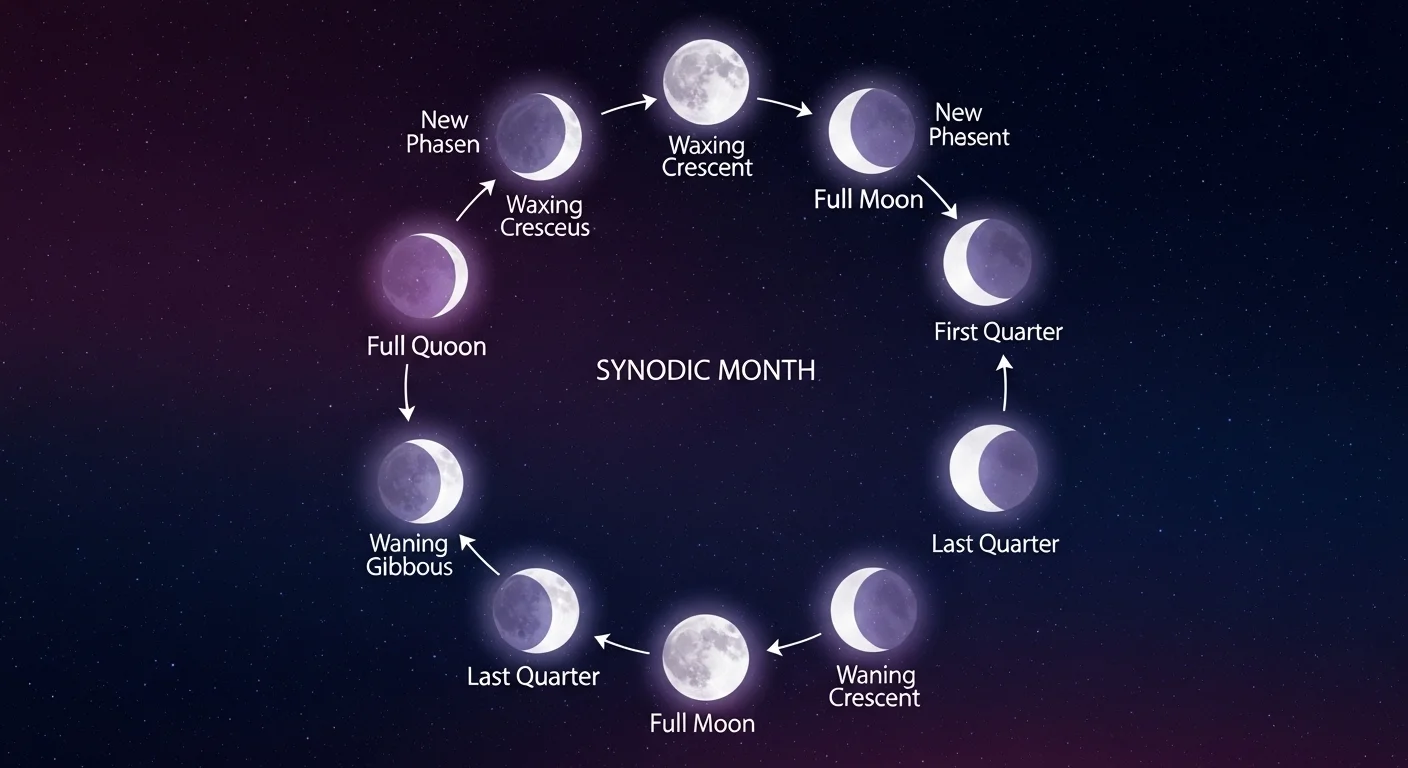
- Riddle: I’m invisible when my cycle begins. What am I?
Hint: I’m aligned with the sun.
Answer: New moon
Explanation: The new moon is not visible from Earth.
- Riddle: I’m a thin sliver, growing brighter each night. What am I?
Hint: It’s early in the cycle.
Answer: Waxing crescent
Explanation: The waxing crescent is a growing moon phase.
- Riddle: I’m half-lit, shining in the evening sky. What am I?
Hint: It’s a quarter phase.
Answer: First quarter
Explanation: The first quarter is half-lit, visible at dusk.
- Riddle: I’m nearly full, glowing brighter nightly. What am I?
Hint: I’m before the full moon.
Answer: Waxing gibbous
Explanation: The waxing gibbous is almost fully illuminated.
- Riddle: I’m a perfect circle, lighting up the night. What am I?
Hint: It’s the brightest phase.
Answer: Full moon
Explanation: The full moon is fully lit by the sun.
- Riddle: I shrink after my fullest glow. What am I?
Hint: It’s post-full moon.
Answer: Waning gibbous
Explanation: The waning gibbous decreases after the full moon.
- Riddle: I’m half-lit, fading in the morning sky. What am I?
Hint: It’s a quarter phase.
Answer: Last quarter
Explanation: The last quarter is half-lit, visible at dawn.
- Riddle: I’m a thin crescent, nearly vanished. What am I?
Hint: It’s near the cycle’s end.
Answer: Waning crescent
Explanation: The waning crescent is a fading sliver.
- Riddle: I’m the cycle from new to new, about 29.5 days. What am I?
Hint: It’s a lunar time period.
Answer: Synodic month
Explanation: The synodic month is the phase cycle duration.
Funny Moon Riddles
These funny moon riddles add humor, perfect for lightening the mood.
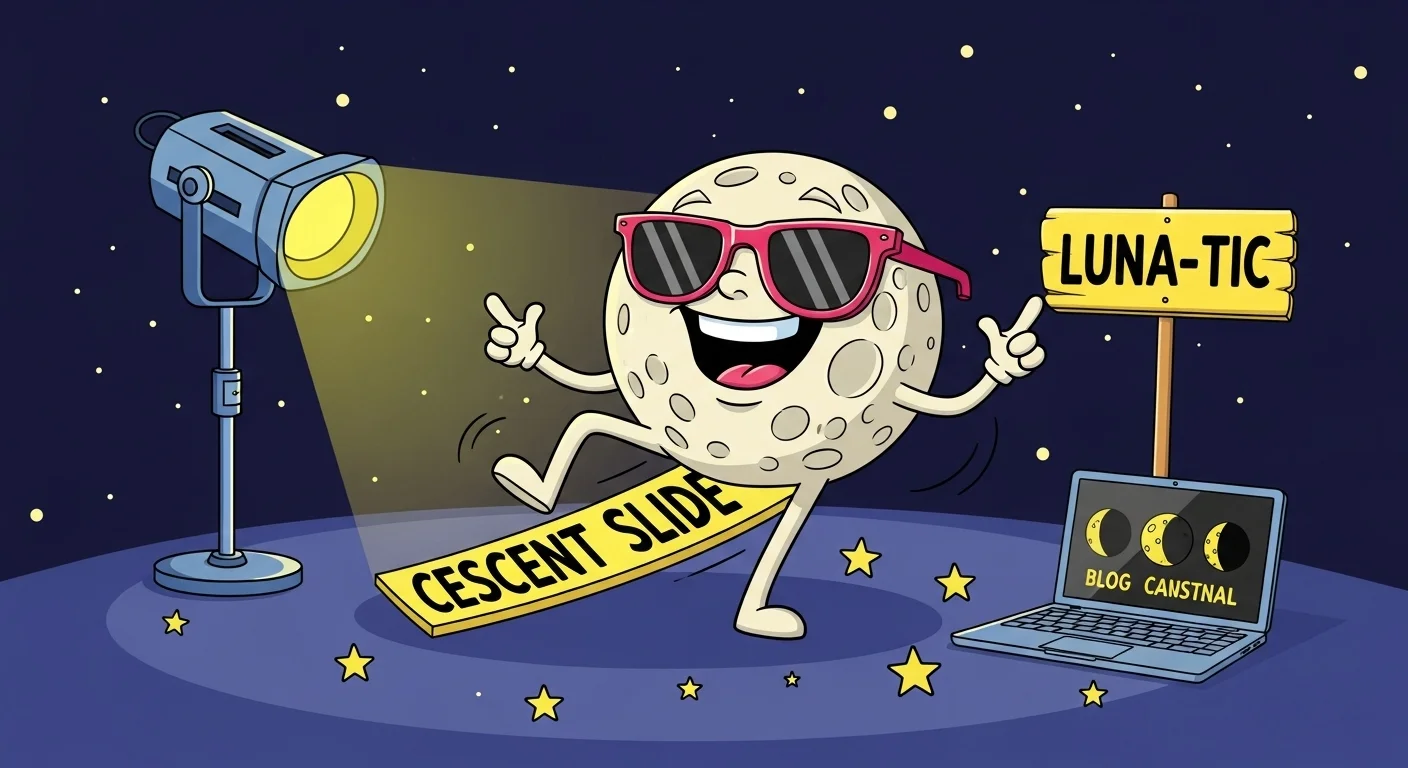
- Riddle: Why did I go to art school?
Hint: It’s about my phases.
Answer: To draw a better phase!
Explanation: A pun on lunar phases and artistic phases.
- Riddle: What’s my nickname when I’m silly?
Hint: It’s a play on “lunar.”
Answer: A luna-tic!
Explanation: Combines “lunar” and “lunatic” for a laugh.
- Riddle: Why did I join a band?
Hint: I shine brightly.
Answer: To steal the spotlight!
Explanation: The moon’s glow is likened to a stage spotlight.
- Riddle: What did I tell the sun at a party?
Hint: It’s about rivalry.
Answer: “Stop stealing my glow!”
Explanation: The moon reflects the sun’s light, sparking a playful rivalry.
- Riddle: Why am I bad at hide-and-seek?
Hint: I’m too bright.
Answer: Because I’m always full and glowing!
Explanation: The full moon’s brightness makes hiding impossible.
- Riddle: Why did I become a night guard?
Hint: I’m always up at night.
Answer: Because I watch the night sky!
Explanation: The moon is a constant nighttime presence.
- Riddle: What’s my favorite dance?
Hint: It’s phase-inspired.
Answer: The crescent slide!
Explanation: A playful nod to the crescent phase.
- Riddle: Why did I start a blog?
Hint: It’s about my changes.
Answer: To share my phases!
Explanation: The moon’s phases are likened to blog updates.
- Riddle: What’s my excuse for being late?
Hint: It’s about my cycle.
Answer: I’m just in a phase!
Explanation: A pun on lunar phases and mood swings. For more playful puzzles, try riddles about nothing.
Moon Riddles and Space Exploration
These riddles celebrate lunar exploration, from Apollo to modern missions.
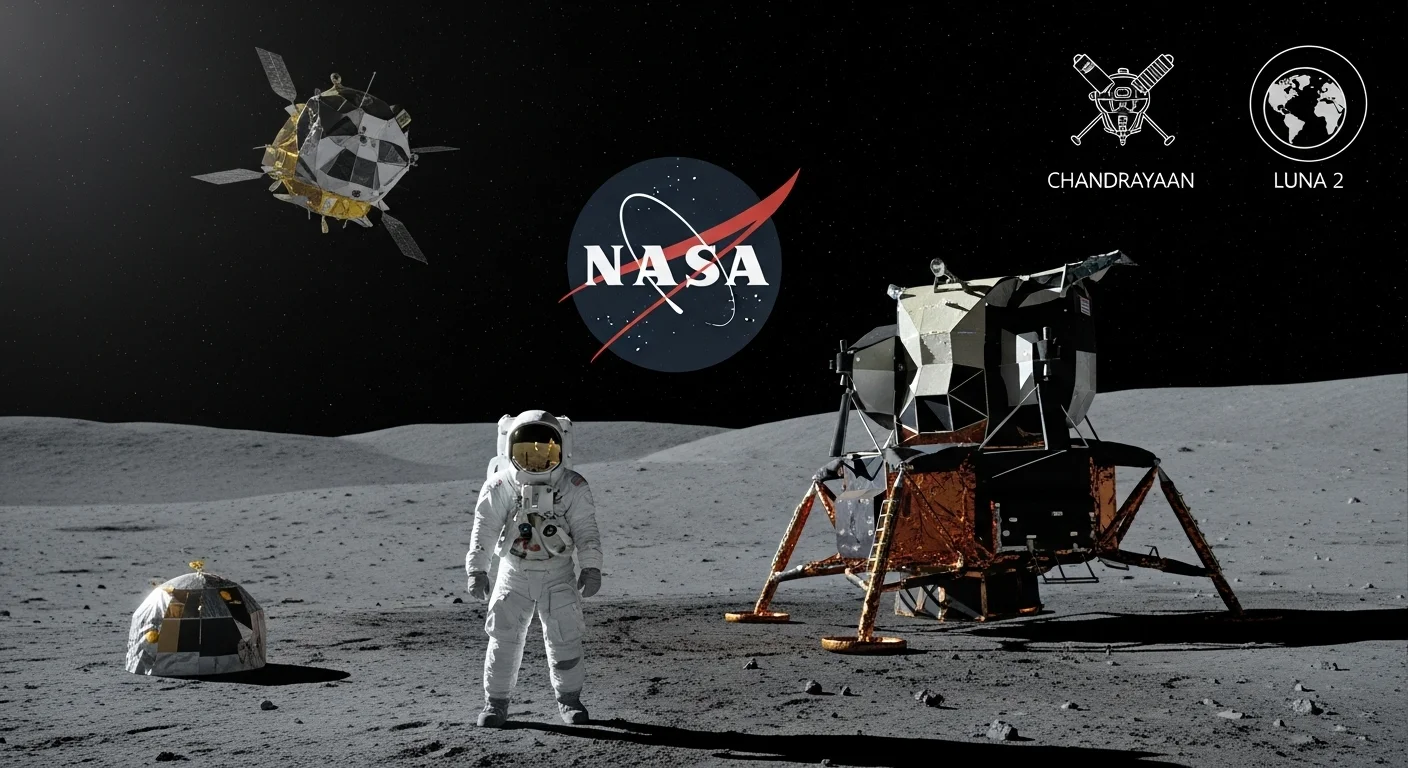
- Riddle: I was first to step on the moon in 1969. Who am I?
Hint: My name starts with N.
Answer: Neil Armstrong
Explanation: Armstrong was the first human on the moon.
- Riddle: I walked after Neil, leaving lunar footprints. Who am I?
Hint: Second on the moon.
Answer: Buzz Aldrin
Explanation: Aldrin was the second man on the moon during Apollo 11.
- Riddle: I orbited while others walked the moon. Who am I?
Hint: I stayed in the command module.
Answer: Michael Collins
Explanation: Collins piloted Apollo 11’s command module.
- Riddle: I’m the mission that first landed humans. What am I?
Hint: It’s an Apollo mission.
Answer: Apollo 11
Explanation: Apollo 11 achieved the first moon landing in 1969. Read more at NASA’s Apollo program.
- Riddle: I carried astronauts to the moon’s surface. What am I?
Hint: It’s named after a bird.
Answer: Lunar Module Eagle
Explanation: The Eagle landed Apollo 11 astronauts on the moon.
- Riddle: I’m NASA’s plan to return to the moon. What am I?
Hint: Named after a goddess.
Answer: Artemis program
Explanation: Artemis aims for new lunar landings.
- Riddle: I’m India’s lunar mission series. What am I?
Hint: It’s led by ISRO.
Answer: Chandrayaan
Explanation: India’s lunar program includes Chandrayaan missions.
- Riddle: I’m the Soviet craft that first hit the moon. What am I?
Hint: It’s from 1959.
Answer: Luna 2
Explanation: Luna 2 was the first spacecraft to reach the moon.
- Riddle: I map the moon with NASA’s orbiting eye. What am I?
Hint: It’s a modern probe.
Answer: Lunar Reconnaissance Orbiter
Explanation: LRO maps the moon’s surface.
Mythological Moon Riddles
These riddles explore the moon’s role in global mythologies.
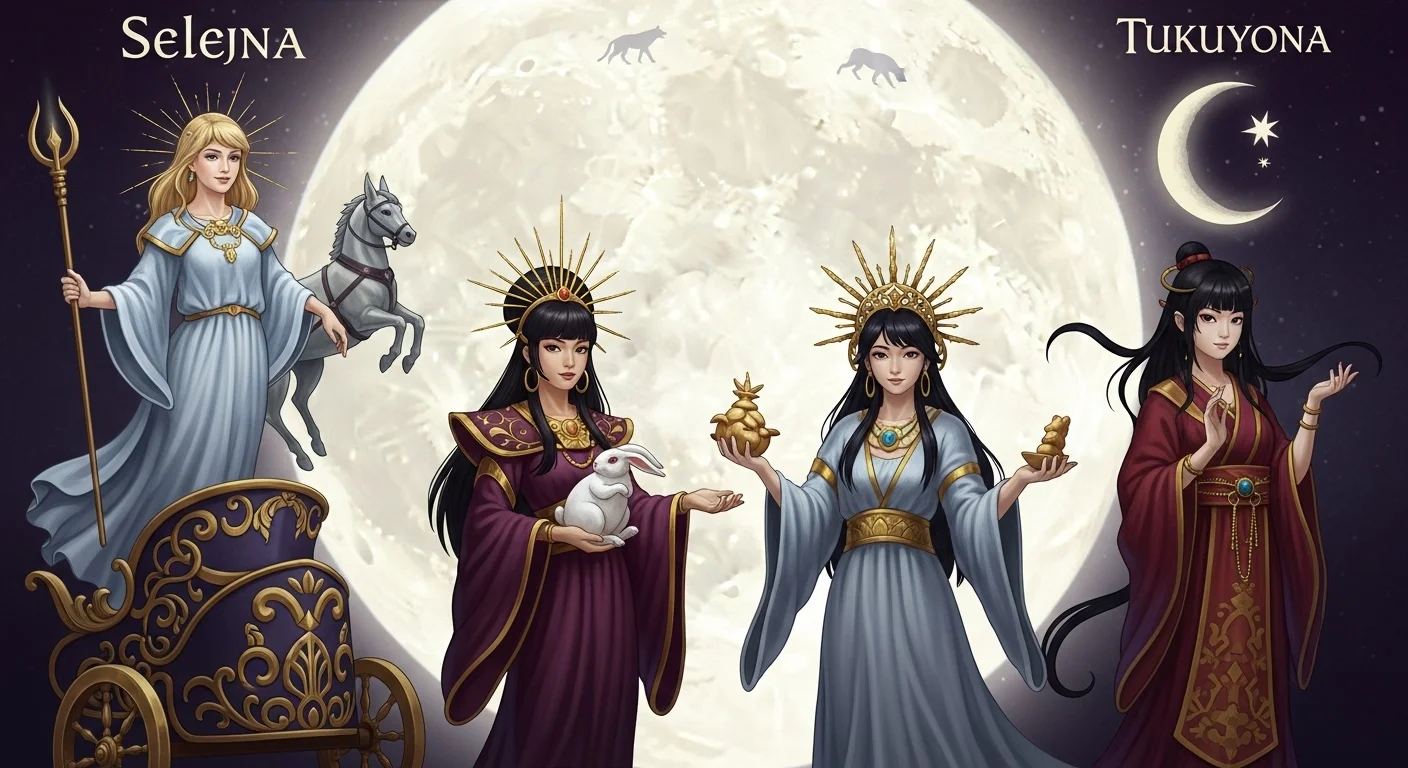
- Riddle: In Greek myth, I’m the moon’s goddess. Who am I?
Hint: My name starts with S.
Answer: Selene
Explanation: Selene is the Greek moon goddess.
- Riddle: In Roman tales, I’m the moon’s divine name. Who am I?
Hint: It’s like “lunar.”
Answer: Luna
Explanation: Luna is the Roman moon goddess.
- Riddle: In Hindu lore, I’m the moon god with 27 wives. Who am I?
Hint: I ride a chariot.
Answer: Chandra
Explanation: Chandra is the Hindu moon deity.
- Riddle: In Chinese myth, I live on the moon with a rabbit. Who am I?
Hint: I’m a goddess.
Answer: Chang’e
Explanation: Chang’e is a key figure in Chinese lunar folklore.
- Riddle: In Japanese myth, I’m the moon’s divine ruler. Who am I?
Hint: I’m a Shinto god.
Answer: Tsukuyomi
Explanation: Tsukuyomi is the Japanese moon god.
- Riddle: In Norse tales, I’m chased by wolves. What am I?
Hint: Wolves are Sköll and Hati.
Answer: The moon
Explanation: Norse mythology depicts wolves chasing the moon.
- Riddle: In Egyptian myth, I’m tied to Thoth’s crescent. What am I?
Hint: It’s a celestial body.
Answer: The moon
Explanation: Thoth is linked to the moon in Egyptian lore.
- Riddle: In Aztec myth, I’m linked to Tecciztecatl. What am I?
Hint: It’s after a sacrifice.
Answer: The moon
Explanation: Tecciztecatl became the moon in Aztec mythology.
- Riddle: In Greek tales, I’m a moon-linked goddess of magic. Who am I?
Hint: I’m not Selene.
Answer: Hecate
Explanation: Hecate is sometimes associated with the moon. For more mythology-inspired puzzles, explore sphinx riddles.
Lunar Eclipse Riddles
These lunar eclipse riddles and solutions capture the drama of eclipses.
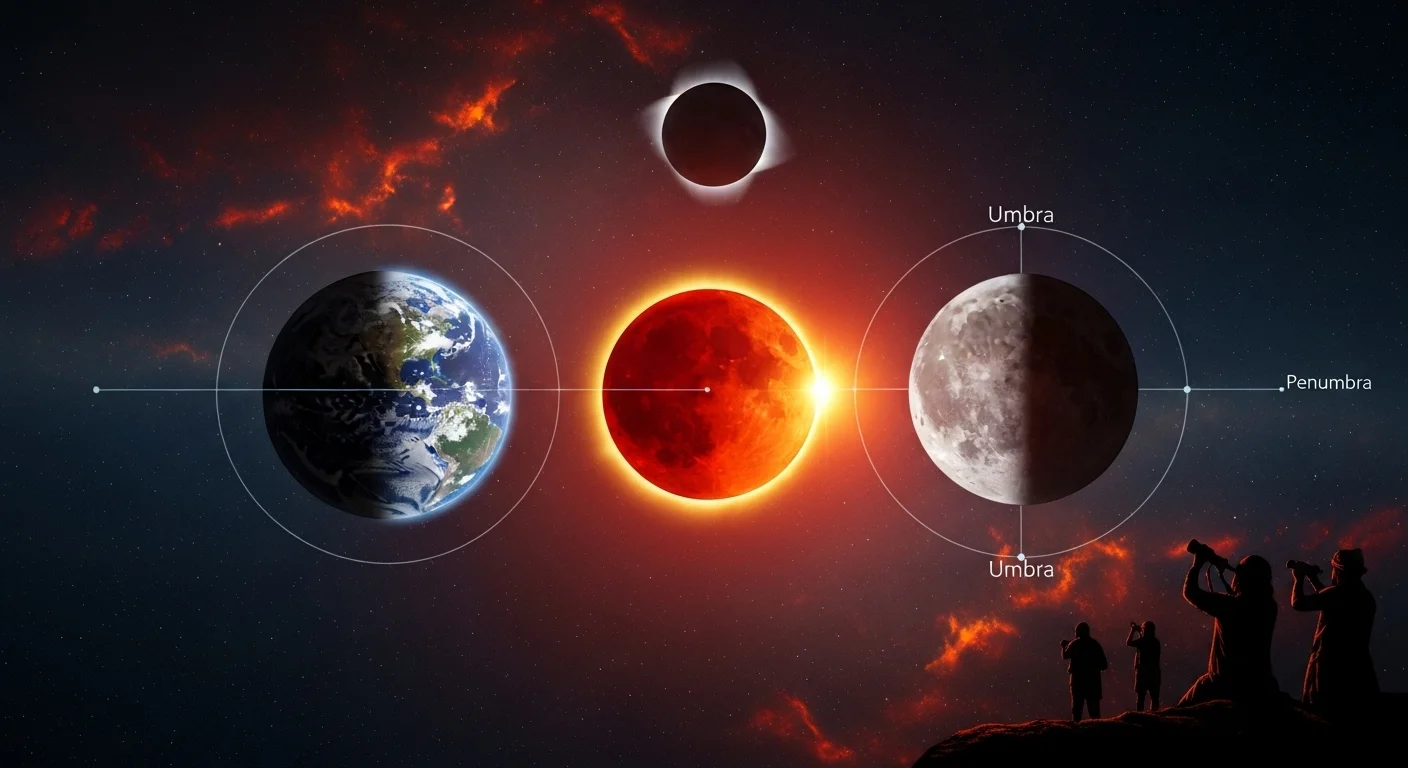
- Riddle: I paint the moon red when Earth blocks the sun. What am I?
Hint: It’s a blood moon event.
Answer: Total lunar eclipse
Explanation: A total lunar eclipse creates a reddish moon.
- Riddle: I shadow part of the moon, not all. What am I?
Hint: It’s a partial event.
Answer: Partial lunar eclipse
Explanation: Only part of the moon is shadowed.
- Riddle: I occur when the full moon hides in Earth’s shadow. What am I?
Hint: It’s an alignment.
Answer: Lunar eclipse
Explanation: Lunar eclipses require Earth, moon, and sun alignment.
- Riddle: I’m called a blood moon for my hue. What am I?
Hint: It’s during an eclipse.
Answer: Total lunar eclipse
Explanation: The moon turns red during a total lunar eclipse.
- Riddle: I dim the moon in Earth’s faint shadow. What am I?
Hint: It’s a subtle eclipse.
Answer: Penumbral lunar eclipse
Explanation: A penumbral eclipse slightly darkens the moon.
- Riddle: In ancient times, I was a divine warning. What am I?
Hint: It’s an eclipse.
Answer: Lunar eclipse
Explanation: Eclipses were seen as omens in history.
- Riddle: I can occur thrice yearly at most. What am I?
Hint: It’s a lunar event.
Answer: Lunar eclipse
Explanation: Up to three lunar eclipses can happen annually.
- Riddle: I make the moon vanish for a while. What am I?
Hint: It’s temporary.
Answer: Lunar eclipse
Explanation: The moon seems to disappear during an eclipse.
- Riddle: I align Earth, moon, and sun for a cosmic show. What am I?
Hint: It’s a celestial dance.
Answer: Lunar eclipse
Explanation: Eclipses occur with precise alignment.
Moon Surface Riddles
These moon surface riddles for science class focus on the moon’s physical features.
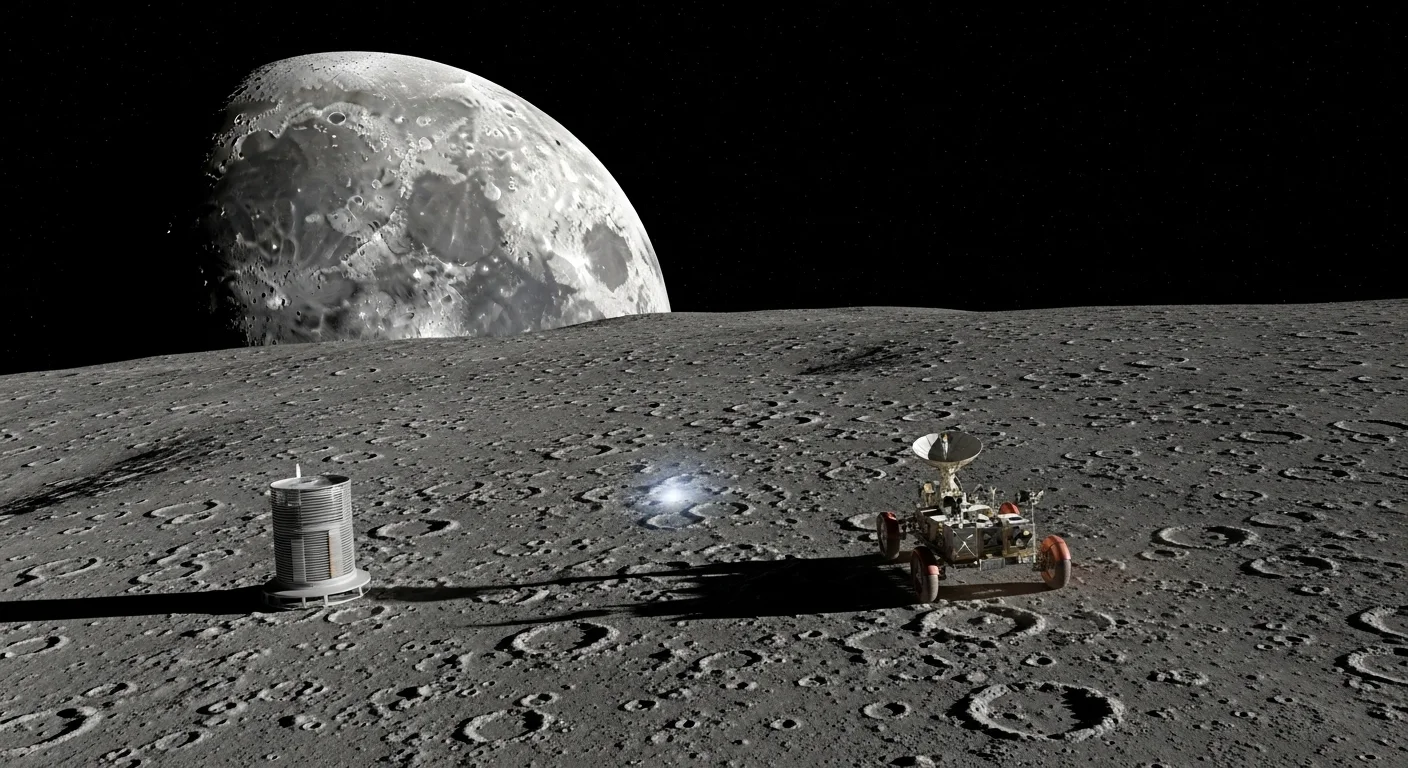
- Riddle: My seas are dry, scarred by ancient impacts. What am I?
Hint: I’m a celestial body.
Answer: The moon
Explanation: The moon has dry lunar maria and craters.
- Riddle: I’m a dark plain named for an ocean. What am I?
Hint: It’s not a real sea.
Answer: Lunar maria
Explanation: Maria are basaltic plains on the moon.
- Riddle: I’m the moon’s largest crater, named for a scientist. What am I?
Hint: It’s massive.
Answer: Bailly
Explanation: Bailly is the moon’s largest impact crater.
- Riddle: I’m a lunar range near Mare Imbrium. What am I?
Hint: Named like Earth’s mountains.
Answer: Apennine Mountains
Explanation: A prominent lunar mountain range.
- Riddle: I’m a valley carved by lunar tectonics. What am I?
Hint: It’s a rille.
Answer: Rima Hyginus
Explanation: A lunar rille formed by geological activity.
- Riddle: I’m the dust on the moon’s surface. What am I?
Hint: It’s powdery.
Answer: Lunar regolith
Explanation: Regolith is the moon’s loose surface material.
- Riddle: I measure moonquakes for science. What am I?
Hint: Left by Apollo missions.
Answer: Seismometer
Explanation: Seismometers detect lunar seismic activity.
- Riddle: I’m where Apollo 11 touched down, a calm sea. What am I?
Hint: It’s a lunar landing site.
Answer: Mare Tranquillitatis
Explanation: Apollo 11 landed in this lunar sea.
- Riddle: I’m the moon’s deepest basin, ancient and vast. What am I?
Hint: It’s on the far side.
Answer: South Pole-Aitken Basin
Explanation: The largest lunar impact basin.
Advanced Lunar Science Riddles
These riddles dive into complex lunar science, appealing to enthusiasts.
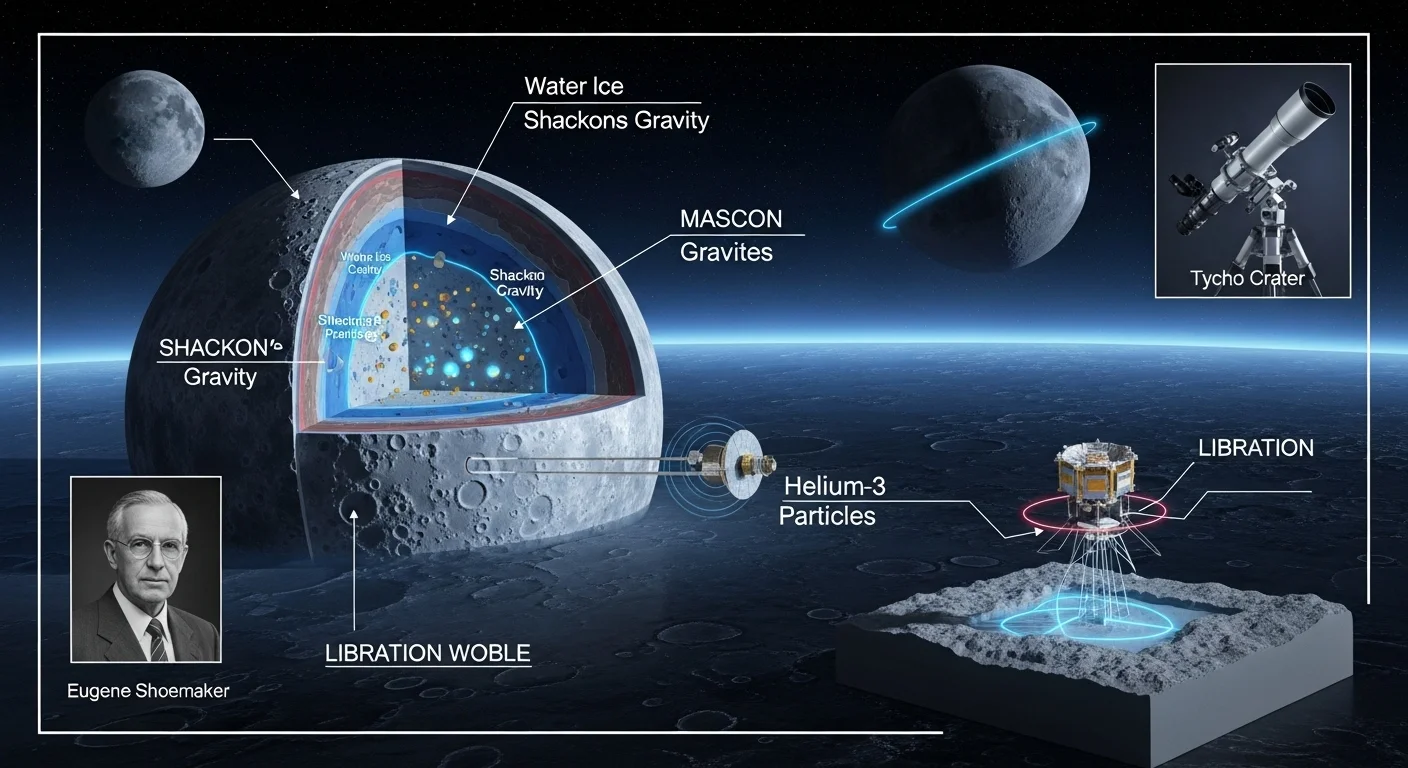
- Riddle: I let you see my edges wobble from Earth. What am I?
Hint: It’s an orbital effect.
Answer: Libration
Explanation: Libration allows slight views of the moon’s far side.
- Riddle: I’m why the moon shines, reflecting sunlight. What am I?
Hint: It’s about brightness.
Answer: Albedo
Explanation: The moon’s albedo measures its reflectivity.
- Riddle: I’m ice hidden in shadowed lunar craters. What am I?
Hint: Key for colonization.
Answer: Water ice
Explanation: Water ice in craters supports future lunar bases.
- Riddle: I’m a resource dreamed for lunar energy. What am I?
Hint: It’s in lunar soil.
Answer: Helium-3
Explanation: Helium-3 is a potential fusion fuel in lunar regolith.
- Riddle: I’m a mass anomaly affecting lunar orbits. What am I?
Hint: It’s gravitational.
Answer: Mascon
Explanation: Mascons are dense regions impacting spacecraft orbits.
- Riddle: I’m a shadowed crater with ice for future bases. What am I?
Hint: It’s at the lunar south pole.
Answer: Shackleton Crater
Explanation: Shackleton holds water ice, vital for colonization.
- Riddle: I’m a bright crater, young and striking. What am I?
Hint: Named for an astronomer.
Answer: Tycho Crater
Explanation: Tycho is a prominent, relatively young lunar crater.
- Riddle: I mapped the moon for water in the ‘90s. What am I?
Hint: It’s a probe.
Answer: Clementine
Explanation: The Clementine probe detected signs of lunar water ice.
- Riddle: My ashes rest on the moon, a scientist’s tribute. Who am I?
Hint: I studied lunar geology.
Answer: Eugene Shoemaker
Explanation: Shoemaker’s ashes were sent to the moon via Luna Prospector.
Moon in Literature and Art
These riddles explore the moon’s role in creative works.
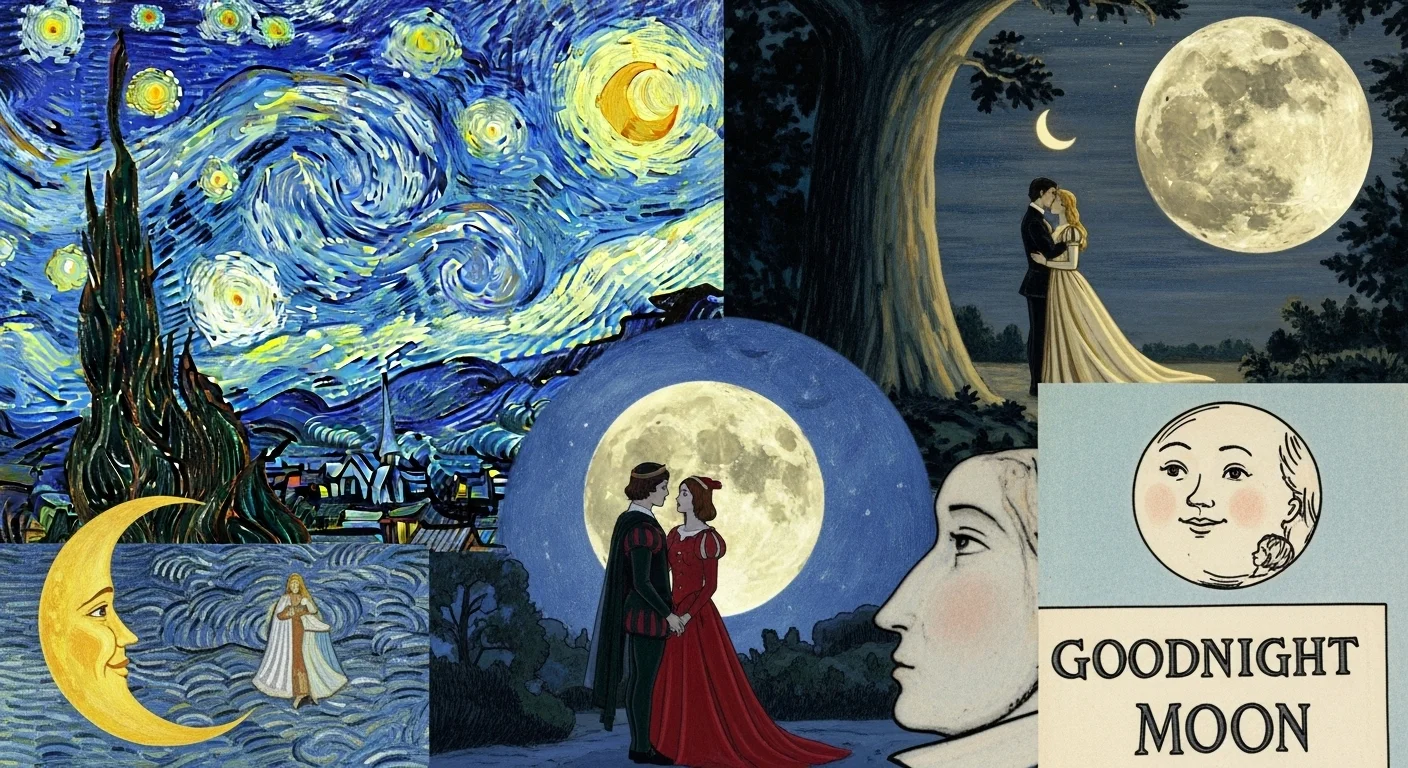
- Riddle: In Van Gogh’s art, I swirl above a starry town. What am I?
Hint: It’s in “The Starry Night.”
Answer: The moon
Explanation: The moon is prominent in Van Gogh’s painting.
- Riddle: In Shakespeare’s play, I’m the envious one killed by the sun. What am I?
Hint: It’s from “Romeo and Juliet.”
Answer: The moon
Explanation: From the line “Arise, fair sun, and kill the envious moon.”
- Riddle: In Plath’s poem, I pair with a yew tree. What am I?
Hint: It’s a poem’s title.
Answer: The moon
Explanation: From Sylvia Plath’s “The Moon and the Yew Tree.”
- Riddle: In kids’ books, I often have a smiling face. What am I?
Hint: Think “Goodnight Moon.”
Answer: The moon
Explanation: The moon is depicted with a face in children’s stories.
- Riddle: In Poe’s poem, I shine on Annabel Lee’s tomb. What am I?
Hint: It’s a romantic image.
Answer: The moon
Explanation: The moon appears in “Annabel Lee’s” imagery.
- Riddle: In nursery rhymes, a cow leaps over me. What am I?
Hint: It’s “Hey Diddle Diddle.”
Answer: The moon
Explanation: From the rhyme where a cow jumps over the moon.
- Riddle: In “A Midsummer Night’s Dream,” I guide lovers. What am I?
Hint: It’s romantic.
Answer: The moon
Explanation: The moon is a romantic symbol in Shakespeare’s play.
- Riddle: In religious art, I’m a crescent under holy figures. What am I?
Hint: It’s symbolic.
Answer: The moon
Explanation: The crescent moon appears in religious iconography.
- Riddle: In Pynchon’s novel, I’m a recurring motif. What am I?
Hint: It’s in “Gravity’s Rainbow.”
Answer: The moon
Explanation: The moon is a symbol in the novel.
Moon in Different Cultures
These riddles highlight the moon’s global cultural significance.
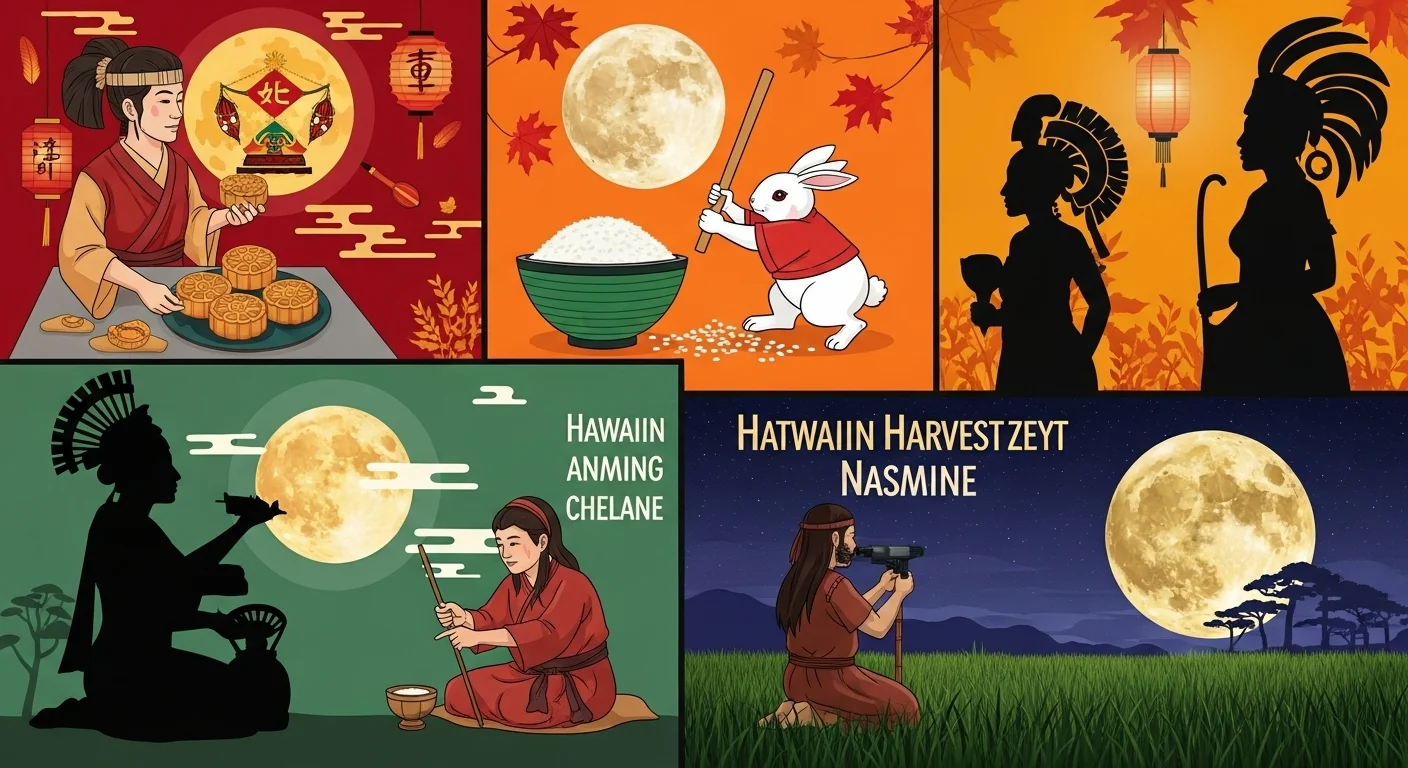
- Riddle: In Islamic tradition, I start Ramadan’s fast. What am I?
Hint: I’m invisible then.
Answer: New moon
Explanation: The new moon marks Ramadan’s beginning. Explore more about Islamic traditions with Ramadan riddles.
- Riddle: In Chinese culture, I’m celebrated with mooncakes. What am I?
Hint: It’s a festival.
Answer: Mid-Autumn Festival
Explanation: Celebrated during the full moon.
- Riddle: In Japanese lore, a rabbit pounds rice on me. What am I?
Hint: It’s a myth.
Answer: The moon
Explanation: The moon rabbit is a Japanese legend.
- Riddle: In Hawaiian tradition, I have names for each phase. What am I?
Hint: It’s a celestial body.
Answer: The moon
Explanation: Hawaiian culture names moon phases uniquely.
- Riddle: In African myths, my gender varies by tribe. What am I?
Hint: I’m divine in many forms.
Answer: The moon
Explanation: The moon’s gender differs across African cultures.
- Riddle: In Native American lore, I’m the Harvest Moon. What am I?
Hint: It’s a full moon name.
Answer: Harvest Moon
Explanation: The Harvest Moon aids autumn farming.
- Riddle: In Polynesian tales, I’m a goddess named Hina. What am I?
Hint: It’s a lunar deity.
Answer: The moon
Explanation: Hina is a Polynesian moon goddess.
- Riddle: In Mayan myth, I’m linked to Ixchel’s light. What am I?
Hint: It’s a goddess’s domain.
Answer: The moon
Explanation: Ixchel is a Mayan moon goddess.
- Riddle: In Native American lore, I’m the Wolf Moon. What am I?
Hint: It’s a January full moon.
Answer: Full moon
Explanation: The Wolf Moon is a Native American full moon name.
Moon and Time
These riddles focus on the moon’s role in timekeeping.
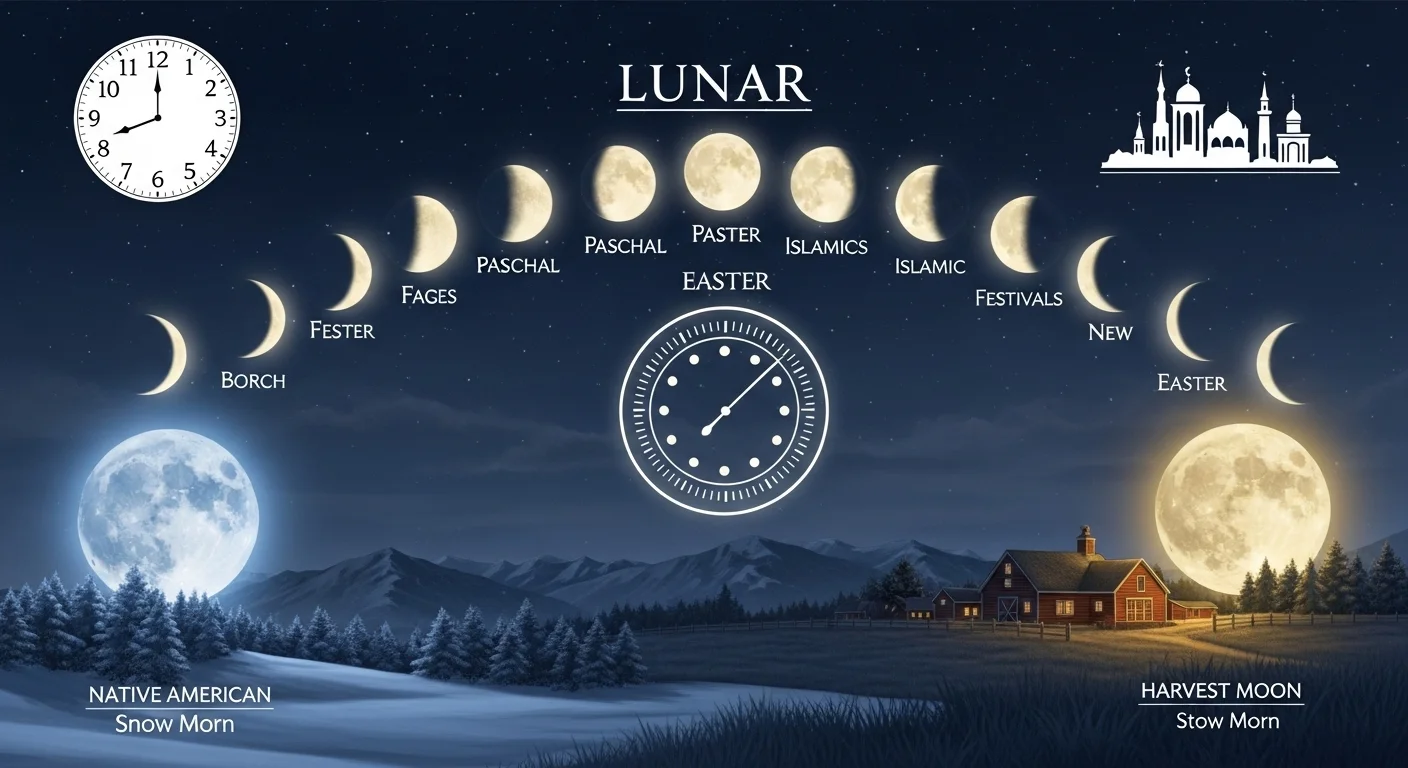
- Riddle: I’m the moon’s orbit relative to the stars. What am I?
Hint: It’s about 27.3 days.
Answer: Sidereal month
Explanation: The sidereal month is the moon’s orbital period.
- Riddle: I’m the cycle from new moon to new moon. What am I?
Hint: It’s about 29.5 days.
Answer: Synodic month
Explanation: The synodic month covers the lunar phase cycle.
- Riddle: I’m a calendar based on lunar phases. What am I?
Hint: It’s not solar.
Answer: Lunar calendar
Explanation: Lunar calendars track moon phases.
- Riddle: I set Easter’s date after the vernal equinox. What am I?
Hint: It’s a full moon.
Answer: Paschal full moon
Explanation: Easter follows the first full moon after the equinox.
- Riddle: I’m the time for all phases to repeat. What am I?
Hint: It’s about 29.5 days.
Answer: Synodic month
Explanation: The synodic month is the phase cycle duration.
- Riddle: I mark Islamic festivals with my sighting. What am I?
Hint: I’m invisible at first.
Answer: New moon
Explanation: The new moon starts Islamic months.
- Riddle: I’m February’s full moon, cold and snowy. What am I?
Hint: It’s a Native American name.
Answer: Snow Moon
Explanation: The Snow Moon is February’s full moon.
- Riddle: I’m the moon’s full orbit around Earth. What am I?
Hint: It’s shorter than 30 days.
Answer: Sidereal month
Explanation: The sidereal month is about 27.3 days.
- Riddle: I’m the full moon aiding farmers’ harvests. What am I?
Hint: It’s an autumn moon.
Answer: Harvest Moon
Explanation: The Harvest Moon lights late-night farming. For more seasonal puzzles, try autumn riddles.
Moon and Tides
These riddles highlight the moon’s tidal influence.
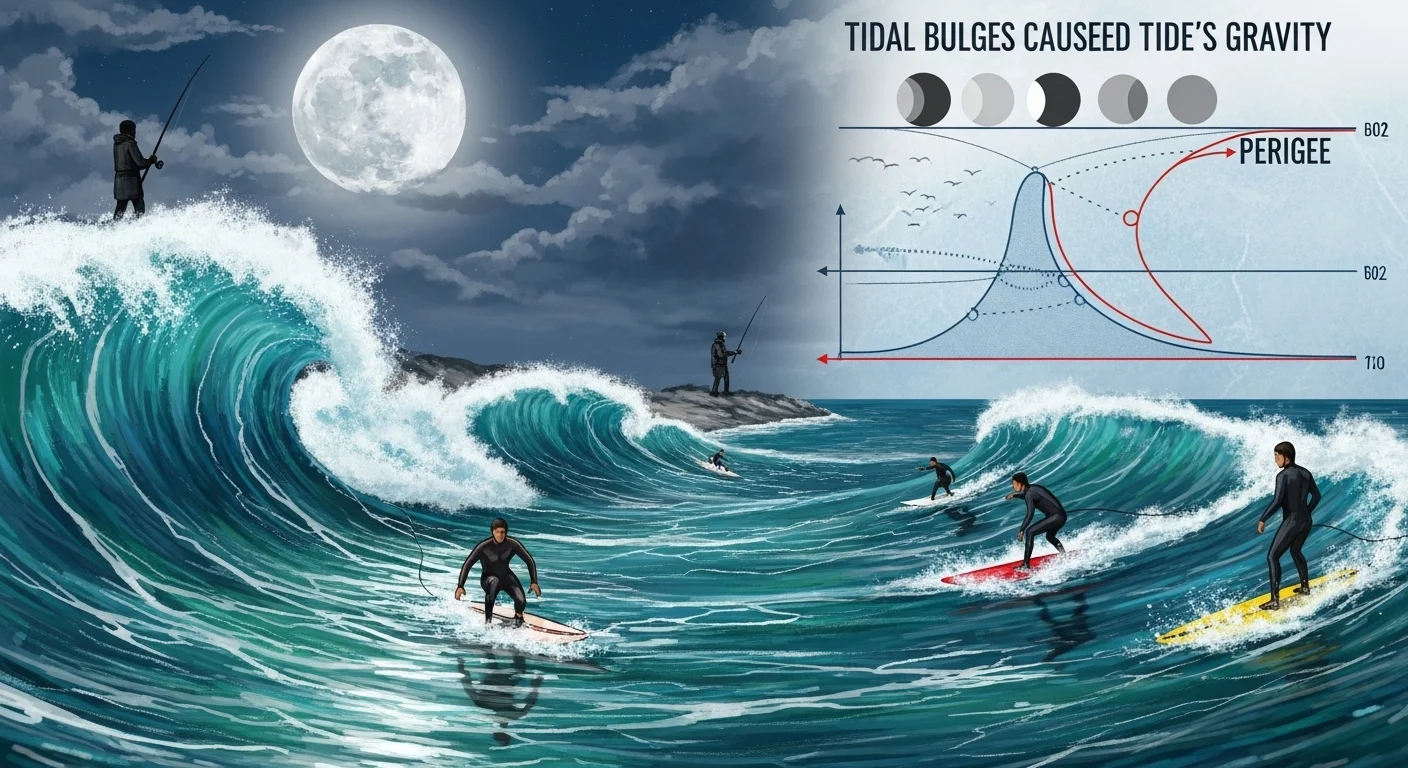
- Riddle: I raise oceans without touching them. What am I?
Hint: It’s about gravity.
Answer: The moon
Explanation: The moon’s gravity causes Earth’s tides.
- Riddle: I’m strongest at perigee, pulling seas high. What am I?
Hint: It’s a close orbit.
Answer: The moon
Explanation: Tides are stronger when the moon is at perigee.
- Riddle: I create two high tides daily. What am I?
Hint: It’s a gravitational pull.
Answer: The moon
Explanation: The moon causes two tidal bulges daily.
- Riddle: I make extreme tides with the sun’s help. What am I?
Hint: It’s during full moon.
Answer: Spring tides
Explanation: Spring tides occur when the moon and sun align.
- Riddle: I’m why surfers chase full moon waves. What am I?
Hint: It’s about bigger tides.
Answer: The moon
Explanation: Full moons create stronger tides for surfing.
- Riddle: I form tidal bulges on Earth’s seas. What am I?
Hint: It’s not the sun alone.
Answer: The moon
Explanation: The moon’s gravity creates tidal bulges.
- Riddle: I’m weaker during quarter phases. What am I?
Hint: It’s a tidal term.
Answer: Neap tides
Explanation: Neap tides occur during quarter moons.
- Riddle: I cause king tides when super close. What am I?
Hint: It’s a supermoon event.
Answer: The moon
Explanation: King tides happen during supermoons.
- Riddle: Fishermen watch my phases for tides. What am I?
Hint: I affect the seas.
Answer: The moon
Explanation: Lunar phases influence fishing due to tides.
Moon Hoaxes and Myths
These riddles address lunar myths and misconceptions.

- Riddle: I’m the claim we never landed on the moon. What am I?
Hint: It’s a conspiracy.
Answer: Moon landing hoax
Explanation: Some falsely claim Apollo landings were staged.
- Riddle: I’m the myth I’m made of cheese. What am I?
Hint: It’s a folklore tale.
Answer: The moon
Explanation: The “moon is cheese” myth is a playful story.
- Riddle: I’m blamed for madness when full. What am I?
Hint: Think “lunatic.”
Answer: The moon
Explanation: The term “lunatic” stems from moon-related myths.
- Riddle: I’m a face seen in lunar craters. What am I?
Hint: It’s an illusion.
Answer: Man in the moon
Explanation: Crater patterns resemble a face in folklore.
- Riddle: I’m said to disrupt sleep, though science doubts it. What am I?
Hint: It’s a full moon myth.
Answer: The moon
Explanation: Some believe full moons affect sleep, but evidence is weak.
- Riddle: I’m a rabbit seen in my shadows in Asian tales. What am I?
Hint: It’s a cultural pattern.
Answer: The moon
Explanation: Many cultures see a rabbit in lunar markings.
- Riddle: I’m falsely called a dark side. What am I?
Hint: It’s my far side.
Answer: The moon
Explanation: The far side isn’t dark, just unseen from Earth.
- Riddle: I’m a myth linking me to human moods. What am I?
Hint: It’s psychological folklore.
Answer: The moon
Explanation: The moon is often tied to mood swings in myths.
- Riddle: I’m the false claim Apollo left no footprints. What am I?
Hint: It’s a hoax theory.
Answer: Moon landing hoax
Explanation: Conspiracy theories deny Apollo evidence.
Comparing Moon Riddles to Other Space Riddles
The focus of moon riddles is not the same as sun riddles: moon riddles talk about changes (phases), reflect back, and have related myths, whereas sun riddles deal with daily cycles and energy. An example of a riddle about the sun is: “I rise each day and shine my light.” What am I?” (Answer: The sun).
A moon riddle like “I glow at night with borrowed light. What am I?” (Answer: The moon) showcases its reflective nature. Moon riddles uniquely blend science and mystery, making them ideal for comparing moon riddles to other space riddles. For more challenging puzzles, try hardest riddles.
How to Solve Moon Riddles
To crack how to solve moon riddles, try these tips:
- Spot Appearance Clues: Words like “round,” “bright,” or “changes” often point to the moon.
- Think Science: References to tides, phases, or reflection suggest lunar traits.
- Consider Culture: Names like Luna or Chang’e hint at mythology.
- Use Context: Night or sky mentions lean toward the moon.
For example, “I’m round but not always around” (Answer: The moon) refers to the moon’s phases, visible only sometimes.
Moon Riddles for Educational Purposes
Moon riddles are among the best moon riddles for educational games. They teach lunar cycles, gravity, or exploration in classrooms. For instance, “I pull the seas with no hands to grip” introduces gravity. They’re also great for moon riddles for team building, fostering collaboration. With moon riddles difficulty levels from easy to advanced, they suit all learners. For more educational content, explore NASA’s moon resources.
Conclusion
This journey through 125+ moon riddles with answers unveils the moon’s many faces—from its phases and tides to its myths and exploration. Whether you’re sharing easy moon riddles for beginners, challenging hard moon riddles for adults, or using space moon riddles for students, these puzzles spark wonder and learning.
The moon, with its craters, gods, and scientific secrets, continues to inspire. Try these at your next gathering or craft your own under the night sky. Share your favorite riddle below or explore more lunar riddles online at Space.com’s moon guide!
Frequently Asked Questions (FAQs)
What is a moon riddle?
A moon riddle is a puzzle where the answer relates to the moon, its phases, scientific traits, or cultural significance, making astronomy fun and engaging.
Why are moon riddles great for kids?
They simplify complex ideas like lunar cycles and gravity, sparking curiosity and encouraging young learners to explore space through play.
Can moon riddles challenge adults too?
Absolutely, riddles about selenology, tidal forces, or lunar myths offer deep, thought-provoking challenges for adult puzzle enthusiasts.
How do moon riddles enhance learning?
They blend science, mythology, and wordplay, helping learners of all ages grasp lunar concepts while boosting critical thinking skills.
What round but not always around?
The moon, round in shape but not always fully visible due to its changing phases.
What blocks the moon every night?
Nothing blocks it nightly; the riddle refers to the new moon’s invisibility when aligned with the sun.
What covers the moon to make it not full?
Earth’s shadow during a lunar eclipse or the angle of sunlight during non-full phases.
What is it called when there’s no moon?
The new moon is called so because, at this stage, it is between Earth and the sun and cannot be seen from Earth.